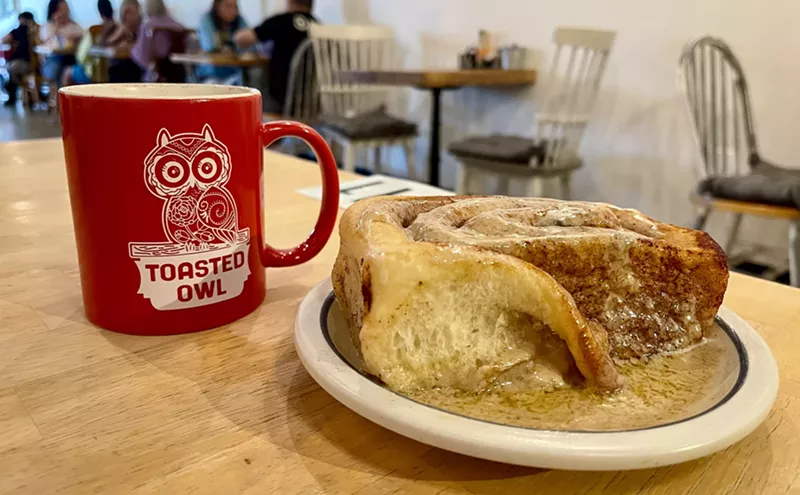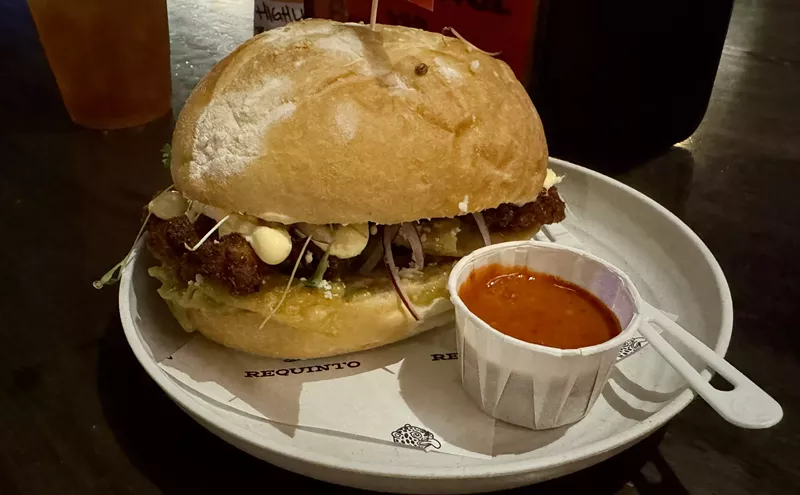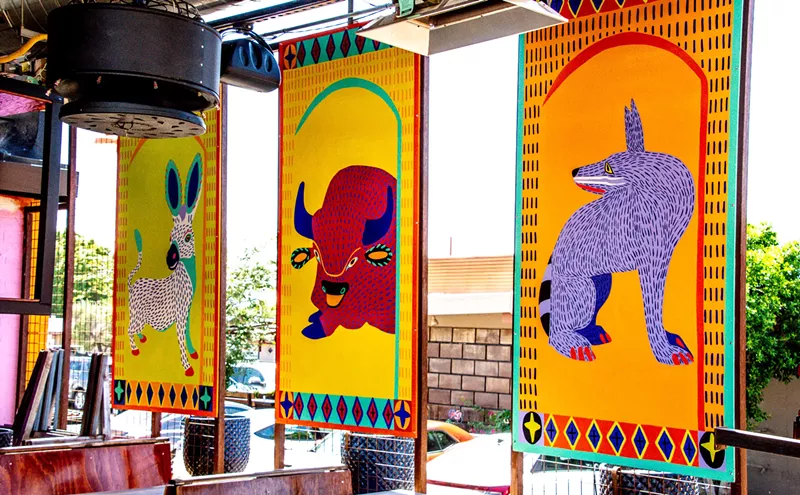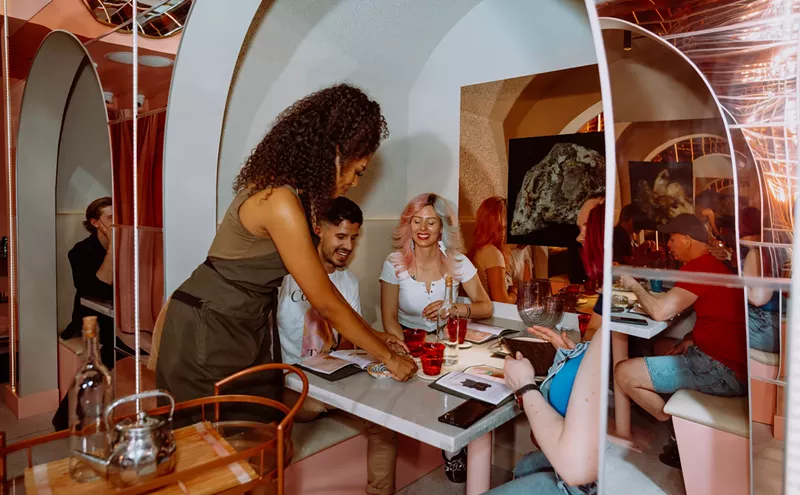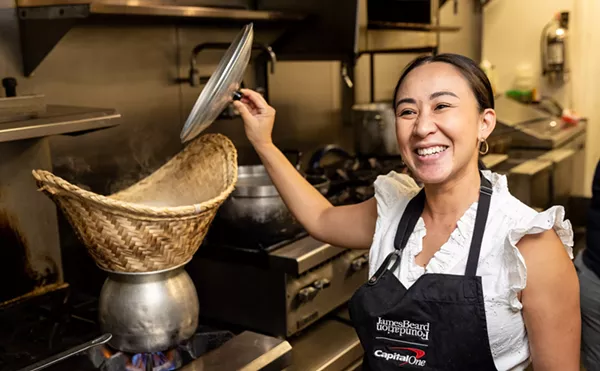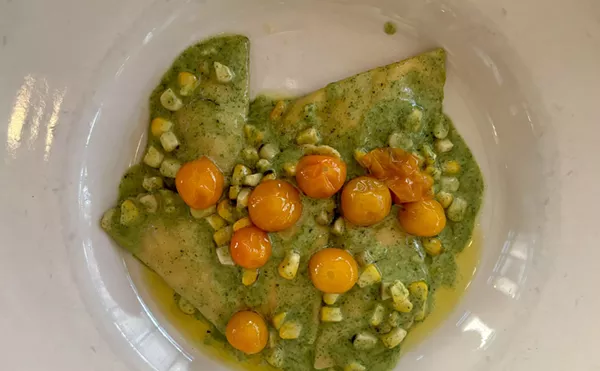When Nikki Foxx noticed local edibles makers were fixated on unhealthy products like cookies, brownies, and candies, she decided somebody needed to teach people how cannabis-infused food could be medicine itself. Today, she's the founder and CEO of Gourmedd, a Phoenix-based company that creates and sells edible medical marijuana products and teaches others how to cook and infuse drinks and foods with cannabis.
She helps medical-marijuana patients understand the best uses for tinctures (alcohol-based cannabis extracts), terpenes (pungent plant oils), and cannabidiol, or CBD, one of marijuana’s active ingredients that's believed to have medicinal properties, but doesn't carry the psychoactive properties found in tetrahydrocannabinol, or THC, the active ingredient that produces a high.
Foxx started legally growing marijuana before Arizona opened dispensaries and used her lifelong curiosity and research about plants and nutrition to create recipes for cannabis products that actually taste good.
During her classes, she teaches students to make things like cran-strawberry jam, salted dark chocolate peanut butter, herbed creamy balsamic vinaigrette, and infused buttered popcorn. The Gourmedd website also provides recipes for cannabis peanut sesame noodles, smoked salmon sandwiches, homemade medicated hazelnut spread, and cannabis-medicated pumpkin apple cider. Foxx even makes skincare products including infused sugar/salt scrubs, sunscreen, body salve, and tattoo cream.
We recently sat down with her to chew the fat about cannabis edibles.
How did you get started cooking with cannabis?
I’ve always been passionate about nutrition and organic and plant-based remedies for all sorts of ailments. I believe that if you have any ailment in your body, it can be fixed by nature somehow. And I’ve always been a real buff when it comes to growing plants and flowers. About four or five years ago, I moved back to Arizona from Mexico and started doing research into medical marijuana laws. I realized that, at the time, I could legally grow. So I emptied out my two-bedroom apartment, filled the rooms with plants, and slept in the living room for two years while I learned to cultivate.
That was a really crazy time. It was like the wild West. It was like, we kind of know what the rules are but not really. We’re not really sure, so we’re just going to go for it.
I was going to these farmers markets and everybody had cookies and brownies and Rice Krispies treats. To me, because I had been studying nutrition for so long, it seemed counterintuitive to be medicating with a product that was full of sugar and packed full of things that were going to kill you. I started to use the cannabis I had left over to make oils and infusions to medicate healthy things: marinara sauce, Alfredo sauce, spinach and artichoke dip, pesto, hummus, all those kinds of things.
So what my business turned into over the years, was me trying to help people understand that they don’t have to medicate with a cookie or a brownie. They don’t have to eat food that they’re not into either. If they want to be healthy, but they want to enjoy it and live a decadent lifestyle, they can still do that.
Why aren’t edibles makers paying more attention to healthy eating?
Honestly, it's because it’s what sells. We’re an industry full of potheads. We get the munchies. When you get the munchies, what do you want to eat? A salad? Or do you want to eat a chocolate brownie?
My goal is to have people think about it differently. Why not medicate throughout the day, slowly, so you don’t get the munchies and feel like you need to eat everything in sight? Why not use a tincture in your morning tea, and a little bit of oil on your salad in the afternoon with CBDs in it and something heavier with your dinner at night to help you sleep and combat any pain that you have throughout the day? All that can be done with organic food, food that’s actually healing your body as you go.
In terms of cooking with cannabis, what are the things you tell people to get them started?
When I work with somebody, the first thing I do is ask them about their diet, and figure out what it is they eat on a normal basis, because the goal is to help them incorporate cannabis into their everyday life in a healthier way.
Once they tell me what they eat, then I cater their first class based off that. So if they eat a lot of salad dressings, I show them how to make oil, then I show them different ways that they can use terpenes in their salad dressings to complement the cannabis they’re using. Let’s say they make a lot of desserts, or they drink a lot of tea during the day, I’ll show them how to make a tincture they can put in their tea. Maybe they’re not into heavy, oily things, or maybe they’re a baker and they want to learn to infuse all their baked goods and also make them gluten-free and healthier for you, then I’ll base my class off that.
Do you typically do one-on-one classes, or do you do group classes?
Right now, I’m only doing private classes. I have a limit of six people per class. My minimum is $150, but basically $50 per person. I come to the person’s house. The reason I do that is so I can go through their kitchen with them, through their refrigerator, see what they’re working with. You can tell a lot about a person’s habits based on that. I’ll be like, “I see you have these two machines here that you’re not really using (maybe they have a food processor, a blender). Let me show you a couple of really cool recipes I can do with these machines really quickly.” And their kitchen all of a sudden comes alive to them again. It’s really fun, because once they see me making all these cool things in their kitchen, they realize it can be done.
Should you be able to taste cannabis in edibles? Some brands seem to embrace that, but some people use CO2 oil or things like that and eliminate the taste entirely.
I think it’s kind of funny, because based on what a consumer wants, you need both. I’ve had people come to me and say, “Why doesn’t this taste like it has weed in it?” And they get mad because they don’t think they’re getting stoned. That’s usually old-school cannabis users because they’re used to the brownies that they just threw a huge pound of weed in. Then there are some people who don’t want to taste it. They don’t want to feel that they’re medicating. I have recipes that do both. In the salted, dark-chocolate peanut butter, you can’t taste it because the dark chocolate is so good at covering up the flavor. Same thing in my cranberry goat cheese tarts. You can’t taste it in those either. But you can taste it in the marinara sauce. It depends on the way you prepare your oil.
What is the most common question you get?
How much should I take? What is a dose? That’s always the question. The science is getting really good, so we know exactly, does this have 10 milligrams in it, does this have 50 milligrams in it. When the industry first started out, you would have people labeling things with 200 milligrams, 50 milligrams, and nobody was accurate. Honestly, some of the stuff in dispensaries now is still not accurate. You know the science and the standards haven’t caught up to the demand. What I always tell people is, “This is approximately this many milligrams. This is what people say is a dose.” Everyone says 10 milligrams is a dose. Some people, if they eat 10 milligrams, they’d laugh. Other people would be completely couch-locked and they wouldn’t be able to move. It also depends if that 10 milligram comes from a gummy, or does it come from a chocolate. Chocolate is going to go throughout your entire body. The medicine is mostly going to be absorbed in your stomach your blood your intestines. Whereas the gummy, because you’re chewing it, the medicine is going to be absorbed into your cheeks, which is a sublingual absorption, which hits you faster and is not as heavy. So people ask, why does a gummy do this to me, and this does something different, and they’re the same milligrams. It’s all about the delivery method. Then you can have two different people eat gummies, the exact same amount of gummies, they have approximately the same amount of tolerance, and one gets completely messed up and the other one doesn’t, just because their body, for some reason, absorbed the medicine better than the other person’s body it. It’s always different. So I tell people, try this much, wait a half hour or wait an hour and try a little more. But always err on the side of caution.
Are infused or edible products something you would recommend to people who haven’t tried cannabis products before? Or is it easy to overdo with an edible product?
I understand why a first-time patient would want edibles rather than smoking. For somebody who has never smoked a cigarette or smoked a joint in his or her life, smoking is like this disgusting, dirty habit, and they don’t understand how that’s going to help them. I think tincture is widely underused. I think it’s one of the best products on the market for people with pain, for people with anxiety, and for people who are medicating for the first time. A tincture will hit you faster, because it’s absorbed sublingually, but not as heavy. There’s no way that, just from a couple drops of tincture, you’re going to be, “Oh my God, I’m so couch-locked I can’t even move.” So for a first-time patient, I would always recommend tincture. I like the vape thing, too. I love vaping, but I still think, too, for people who haven’t tried anything in their life, it’s hard for them to buy this weird, little machine and put the concentrate in it and smoke it. We need to offer all these kinds of alternatives to be able to cater to everybody.
Some people believe that marijuana is only for medicine. If Prop 205 passes, are you planning to expand your classes to recreational users?
Absolutely, I’ll open it up to recreational. I’ll still have the same focus, which will be health. Use this plant for what it’s good for. Use the earth and nature for what it’s meant for. Pharmaceutical companies just kill me because most of the pills that they’re selling, they extracted something from a plant to get the active ingredient in that pill, and I’m like, just use the plant. It’s not the end-all and be-all of medicine that some people claim. It’s not the only thing that we should be using for health, but it a huge, beneficial factor that we haven’t been using. We should learn all about it.
Who are your clients?
Most of my clients are middle-aged people who have just gotten back into cannabis or back into their health. The younger people are more interested in our products. They’re like, “Oooh, I want to try that, I want to try that. You put CBD in it? I’ll try anything you put CBD in.”
What I’ve noticed is that the industry is changing so fast that a class I would have written a year ago is now totally obsolete. My first cooking class was on a table with a food processor. We were in a kitchen. It was $20.
You have to be running and be running fast. Gourmedd changes as the industry changes. If people want a product with CBD in it, let’s see if we can make new products with CBD. We’ve changed our approach many many times.
For more information about Foxx or her gourmet edibles company, check out the Gourmedd website.

Audio By Carbonatix
[
{
"name": "GPT - Billboard - Slot Inline - Content - Labeled - No Desktop",
"component": "21251496",
"insertPoint": "2",
"requiredCountToDisplay": "2"
},{
"name": "STN Player - Float - Mobile Only ",
"component": "21327862",
"insertPoint": "2",
"requiredCountToDisplay": "2"
},{
"name": "Editor Picks",
"component": "16759093",
"insertPoint": "4",
"requiredCountToDisplay": "1"
},{
"name": "Inline Links",
"component": "17980324",
"insertPoint": "8th",
"startingPoint": 8,
"requiredCountToDisplay": "7",
"maxInsertions": 25
},{
"name": "GPT - 2x Rectangles Desktop, Tower on Mobile - Labeled",
"component": "21934225",
"insertPoint": "8th",
"startingPoint": 8,
"requiredCountToDisplay": "7",
"maxInsertions": 25
},{
"name": "Inline Links",
"component": "17980324",
"insertPoint": "8th",
"startingPoint": 12,
"requiredCountToDisplay": "11",
"maxInsertions": 25
},{
"name": "GPT - Leaderboard to Tower - Slot Auto-select - Labeled",
"component": "17012245",
"insertPoint": "8th",
"startingPoint": 12,
"requiredCountToDisplay": "11",
"maxInsertions": 25
}
]

